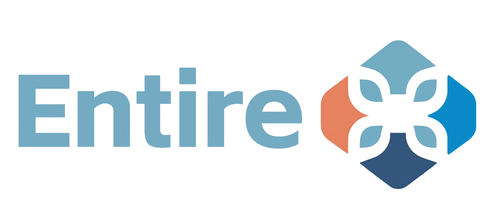Juvenile Furniture (HS 9403 - Non-Seating) & Tariffs: Guide for Nursery Brands

The 2025 US tariffs on Chinese imports are significantly impacting the juvenile products sector, particularly non-seating children's furniture classified under HS Code 9403. This diverse category includes essential nursery items like changing tables, toy chests and storage units, children's desks, and play tables. Executives at brands such as Delta Children, DaVinci, Storkcraft, and IKEA, along with many other manufacturers, must now strategize for sourcing shifts, cost management, and adherence to stringent safety standards like ASTM F2057 (stability) and ASTM F2388 (changing tables).
- 1. Furnishing Nurseries: Just How Much Does the US Depend on China?
- 2. Global Cribs & Chests: Who Are the Alternative Manufacturing Hotspots?
- 3. Cost of Diversifying Nursery Furniture: What's the Bottom Line Impact?
- 4. Mexico-Made Nursery Gear: Cracking the USMCA Code for Juvenile Furniture?
- 5. Shipping Nursery Furniture: Asia vs. Mexico – Time & Cost Deep Dive?
- 6. Safety First: Decoding ASTM F2057 & F2388 for Juvenile Furniture?
- 7. Nursery Nightmares: Identifying Material Bottlenecks in Juvenile Furniture?
1. Furnishing Nurseries: Just How Much Does the US Depend on China?
How reliant is the US market on China for specific HS 9403 juvenile furniture like Delta Children's changing tables, Storkcraft's toy organizers, or IKEA's children's desks?
The US market has a strong reliance on China for HS 9403 juvenile furniture:
* Changing Tables (e.g., Delta Children, Graco): China has traditionally supplied 60-75% of these, valued for its ability to produce combination units (e.g., crib with attached changer) and work with various materials (wood, MDF, plastics).
* Toy Chests & Storage Units (e.g., Storkcraft, KidKraft): Approximately 65-80% are sourced from China, especially those involving complex designs, licensed characters, or mixed materials.
* Children's Desks & Activity Tables (non-seating focus - e.g., IKEA LÄTT, Melissa & Doug): China accounts for about 55-70%, particularly for MDF or particleboard-based flat-pack furniture.
2. Global Cribs & Chests: Who Are the Alternative Manufacturing Hotspots?
Beyond China, for items like Milliard's folding nap mats/beds or KidKraft's dollhouse-style bookcases, are there reliable alternative production hubs in Vietnam, Indonesia, Malaysia, or Eastern Europe (e.g., Poland) and capable suppliers?
Alternative manufacturing locations are developing:
* Vietnam & Indonesia: Strong in wooden furniture, including juvenile items. Major brands like KidKraft and those supplying mass retailers have expanded production here. Look for factories with experience in flat-pack (RTA) furniture and US/EU safety compliance.
* Malaysia: Also offers wood and board furniture manufacturing capabilities, sometimes with a focus on rubberwood or other locally sourced materials.
* Eastern Europe (Poland, Baltics, Romania): Well-established furniture industry, particularly for board-based (MDF, particleboard) and solid wood items. Can be competitive for higher quality or more customized designs for the US market. Suppliers often serve major European retailers like IKEA.
3. Cost of Diversifying Nursery Furniture: What's the Bottom Line Impact?
What are the unit cost differences when sourcing solid wood children's toy boxes from Southeast Asia or MDF children's study desks from Mexico, compared to similar items from China (considering materials, processing, hardware, and packaging)?
- Solid Wood Children's Toy Boxes (SE Asia vs. China): SE Asia (e.g., Vietnam, Indonesia using local woods or imported pine/birch) might be +5% to +20% higher than China, depending on wood species, finishing quality, and hardware.
- MDF Children's Study Desks (Mexico vs. China): Mexico could be +10% to +30% more expensive for flat-pack MDF furniture. Factors include cost of CARB-compliant MDF panels, edge-banding quality, hardware, and labor. Freight savings to the US from Mexico might partially offset production cost differences for these bulky items.
4. Mexico-Made Nursery Gear: Cracking the USMCA Code for Juvenile Furniture?
For finishing and assembling Pottery Barn Kids' bedroom dressers or Crate & Kids' play tables in Mexico, can USMCA origin rules be met? What are the origin requirements for imported wood, engineered panels, and hardware like drawer slides?
USMCA compliance for HS 9403 juvenile furniture assembled in Mexico is achievable, typically through RVC or tariff shift rules:
* Wood & Engineered Panels (MDF, Particleboard): If imported from outside North America, these must undergo substantial transformation in Mexico (e.g., cutting, routing, drilling, edge-banding, finishing, assembly into a new tariff item). Sourcing NA-origin (US/Canada/Mexico) CARB P2 compliant panels is a safer route for meeting RVC.
* Drawer Slides, Hinges, Knobs (Hardware): Can often be sourced globally under de minimis rules if their value is a small percentage of the total. However, for RVC calculations, North American-made hardware is preferred. All hardware must be child-safe (e.g., lead-free, no pinch points).
* Anti-Tip Kits: For clothing storage units, these are critical and must be included, meeting ASTM F2057 requirements.
5. Shipping Nursery Furniture: Asia vs. Mexico – Time & Cost Deep Dive?
How do transit times and transport costs compare for a container of assembled children's wardrobes (HS 9403) or flat-packed bookcases from China/Vietnam to the US, versus trucking from Mexico?
- China/Vietnam (Sea to US Ports + Inland): 30-55 days. Ocean freight for furniture is high due to volume. Flat-packing significantly improves container utilization compared to assembled items.
- Mexico (Cross-border Truck to US): 5-15 days. Much faster. For bulky items, even flat-packed, full truckloads from Mexico can be competitive with sea freight from Asia when considering total landed cost and inventory holding.
6. Safety First: Decoding ASTM F2057 & F2388 for Juvenile Furniture?
When importing children's storage furniture (e.g., toy chests, dressers), what specific requirements of ASTM F2057 (stability/anti-tip for clothing storage units) need careful attention? What are key safety provisions for changing tables under ASTM F2388?
- ASTM F2057 (Clothing Storage Unit Stability):
- Tip-Over Test: Unit must not tip over when drawers are opened, and a 50 lb weight is applied to the front edge of an open drawer/door.
- Warning Labels: Specific warning labels regarding tip-over risk must be permanently affixed.
- Tip-Over Restraint Device (Anti-Tip Kit): Must be included with the product and meet ASTM F3096 performance standards.
- ASTM F2388 (Changing Tables):
- Structural Integrity: Must support a specified weight without breaking.
- Barriers/Enclosures: Sides must be of a minimum height to prevent falls.
- Safety Straps: Must include a functional restraint system.
- Stability: Must not tip easily.
- No Hazardous Gaps/Openings: To prevent entrapment.
7. Nursery Nightmares: Identifying Material Bottlenecks in Juvenile Furniture?
Are there critical supply chain vulnerabilities for CARB P2 grade MDF/particleboard, lead-free/non-toxic paints/coatings, durable drawer slides, or anti-tip hardware used in juvenile furniture?
Yes, key vulnerabilities include:
* CARB P2 Compliant Engineered Wood: Consistent global supply of certified low-formaldehyde MDF and particleboard is crucial. Mills require certification and regular testing.
* Non-Toxic, Lead-Free Paints & Coatings: Ensuring paints and finishes meet CPSIA limits for lead and other heavy metals, and are durable enough for children's use, requires reliable, certified suppliers.
* Durable & Safe Hardware: Sourcing high-quality drawer slides that operate smoothly and safely (e.g., with soft-close features to prevent pinched fingers), hinges, and especially reliable anti-tip kits that consumers will actually use.
* Edge Banding Quality: For board furniture, durable and securely applied edge banding is important for safety (no sharp edges) and product longevity.
Disclaimer: The information provided in this article is for general informational purposes only and does not constitute financial, legal, or specific sourcing advice. Market conditions are highly dynamic and specific advice should be sought from qualified professionals.




